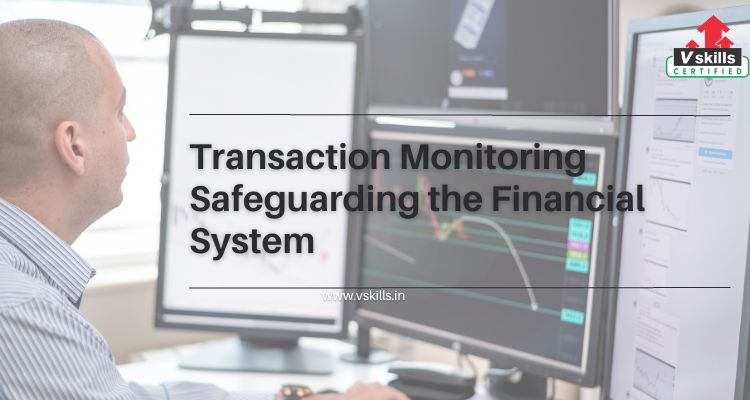In the era of digital banking and globalization, the financial landscape is vast and intricate. With billions of transactions taking place daily, maintaining the integrity and efficiency of financial systems is paramount. Transaction monitoring plays a vital role in this arena, particularly in Anti-Money Laundering (AML) and Know Your Customer (KYC) procedures. This article explores the importance, understanding, and key components of effective transaction monitoring systems.
The Importance of Transaction Monitoring in AML and KYC: Safeguarding the Financial System
Preventing Fraud and Money Laundering
- Identifying Suspicious Activity: Transaction monitoring allows financial institutions to detect anomalous patterns in real-time, helping to catch fraudulent activities before they escalate. By continuously analyzing transactions, irregularities can be spotted and stopped in their tracks.
- Supporting Law Enforcement: By monitoring transactions and reporting suspicious activities to relevant authorities, banks and financial institutions play a vital role in supporting law enforcement in their efforts to combat financial crime.
Enhancing Customer Verification through KYC
- Building Customer Profiles: KYC procedures create detailed profiles of customers based on their transaction history. These profiles are essential for recognizing potential fraudulent activity and ensuring that financial institutions know who they are dealing with.
- Trust and Reputation: By demonstrating a commitment to understanding their customers and monitoring their transactions, financial institutions can build trust and a reputation for integrity and security.
Regulatory Compliance
- Aligning with Regulations: Regulatory compliance is an essential aspect of transaction monitoring. Financial institutions must adhere to various national and international regulations, such as the Bank Secrecy Act (BSA) in the United States or the European Union’s AML directives.
- Avoiding Penalties: Not adhering to these rules can lead to significant fines. Through strict transaction oversight, financial entities can ensure they meet regulatory standards and steer clear of legal complications.
Understanding Transaction Monitoring: How It Works and Why It Matters
How Transaction Monitoring Works
- Continuous Oversight: Transaction monitoring isn’t a one-time procedure; it’s a continuous process where transactions are tracked, analyzed, and compared to expected behavior patterns.
- Technology in Action: Today’s transaction monitoring employs sophisticated technology like artificial intelligence and machine learning to automate the process, making it more effective and efficient.
Why It Matters
- Economic Stability: Transaction monitoring helps maintain economic stability by ensuring that money within the system is legitimate, thus building trust in financial institutions.
- Global Considerations: In a globalized world, transaction monitoring becomes even more critical as financial activities cross international borders. Effective monitoring helps to ensure that international laws and regulations are adhered to, fostering a cooperative global financial environment.
Key Components of Effective Transaction Monitoring Systems for AML Compliance
Real-time Analysis
- Immediate Response: Real-time analysis ensures an immediate response to suspicious activities, minimizing potential damage.
- Technological Advancements: Modern systems are leveraging Big Data and machine learning to make real-time analysis more precise and actionable.
Integration with Other Systems
- Holistic View: By integrating with other systems, transaction monitoring can provide a holistic view of customer activities, drawing connections that might be missed otherwise.
- Collaboration: This integration fosters collaboration between various departments within financial institutions, promoting a more unified approach to combating financial crimes.
Customizable Rules and Algorithms
- Tailored Solutions: Different financial institutions have different needs. Customizable rules and algorithms allow these institutions to tailor their transaction monitoring systems to their specific requirements.
- Adaptability: As financial crimes evolve, so must the systems designed to detect them. Customizable solutions allow for adaptability to new types of fraud and changes in the regulatory environment.
Regulatory Reporting
- Transparency with Authorities: Regulatory reporting fosters transparency with authorities and helps maintain an ongoing dialogue between financial institutions and regulators.
- Streamlining Processes: Automating the reporting process can streamline these essential tasks, ensuring accuracy and efficiency.
User-friendly Interface
- Accessibility: A user-friendly interface ensures that those responsible for monitoring transactions can do so with ease, leading to more effective oversight.
- Training and Support: Ease of use means less training is required, and support can be more readily provided, further enhancing the effectiveness of the transaction monitoring system.
Challenges in Implementing Transaction Monitoring Systems
Data Overload
- The sheer volume of transactions taking place daily can lead to an overwhelming amount of data. This “data noise” can sometimes obscure genuine red flags, potentially allowing suspicious transactions to slip through the net.
- Filtering Relevant Data: Implementing robust filtering mechanisms is essential to discern between typical and potentially malicious transactions.
- Balancing Sensitivity: Setting the system too sensitively can lead to numerous false positives, while a lax system might miss genuine threats. Striking the right balance is a persistent challenge.
Evolving Threat Landscape
- Criminals are becoming increasingly sophisticated in their tactics, continually adapting to the systems designed to catch them.
- Continuous System Updates: This necessitates constant updates and adjustments to transaction monitoring systems to stay ahead of potential threats.
- Cross-border Complexities: Transactions that span multiple countries can introduce additional layers of complexity due to varying regulations and standards.
Integration with Legacy Systems
- Many financial institutions operate older systems that might not seamlessly integrate with modern transaction monitoring solutions.
- Overhauling Infrastructure: An entire overhaul can be expensive and time-consuming but may be necessary for optimal monitoring.
- Interoperability: Ensuring different systems communicate effectively with one another is crucial to provide a holistic view of transactions.
The Future Trajectory of Transaction Monitoring
Increased Automation and AI Integration
- The future will likely see an even greater reliance on AI to automate transaction monitoring. Machine learning models can analyze vast datasets faster and with more accuracy than human analysts.
Behavioral Biometrics
- Advanced monitoring systems may incorporate behavioral biometrics, which analyzes the unique ways in which users interact with their devices, providing an additional layer of verification.
Distributed Ledger Technology (DLT)
DLT, commonly associated with blockchain, provides a transparent and immutable record of transactions. Integrating DLT can offer enhanced trustworthiness and traceability to transaction records.
- Holistic Financial Crime Management Platforms: The future might see the amalgamation of transaction monitoring with other financial crime prevention tools, creating holistic platforms that offer a 360-degree view of potential threats.
Importance of Training and Continuous Learning
Keeping Up with Technological Advances: As transaction monitoring systems evolve, so must the knowledge of those operating them. Continuous training ensures that personnel can effectively harness the full power of these systems.
- Understanding Criminal Tactics: Training programs must also educate users about the latest criminal tactics and how they manifest within transaction data.
- Regulatory Evolution: AML and KYC regulations are continually evolving. Regular training ensures that financial institutions remain compliant and are aware of new reporting requirements.
Global Cooperation in Transaction Monitoring
International Regulatory Bodies
In a globalized financial world, various international bodies, such as the Financial Action Task Force (FATF), lay down guidelines and frameworks for countries to adhere to.
- Setting Global Standards: The FATF, for example, issues international standards on combating money laundering, terrorist financing, and other related threats.
- Cross-border Cooperation: Sharing intelligence, data, and best practices across borders can amplify the efficiency of transaction monitoring systems, making it harder for perpetrators to exploit regional differences.
Regional Differences & Challenges
While global cooperation is crucial, individual regions have unique financial landscapes and challenges.
- Adapting to Regional Needs: For instance, mobile banking is predominant in parts of Africa, which necessitates transaction monitoring tools tailored for mobile money transactions.
- Addressing Informal Economies: In areas with a high percentage of informal economic activities, creating robust monitoring mechanisms can be more challenging.
The Impact of Emerging Technologies
Quantum Computing
With its potential to process vast amounts of data at unprecedented speeds, quantum computing might revolutionize transaction monitoring.
- Enhanced Analysis: Quantum computers can perform complex calculations much faster than classical computers, leading to quicker identification of suspicious activities.
- Cryptography Challenges: However, quantum computing also presents challenges, notably in the field of cryptography. The encryption methods that secure today’s online transactions might become vulnerable, necessitating new cryptographic techniques.
Decentralized Finance (DeFi)
DeFi platforms operate without traditional intermediaries, such as banks, posing unique challenges for transaction monitoring.
- Anonymous Transactions: Many DeFi platforms operate on blockchains that support anonymity, making transaction monitoring more complex.
- New Monitoring Techniques: This necessitates the development of novel monitoring techniques specifically designed for decentralized systems.
Ethical Considerations in Transaction Monitoring
Data Privacy
Transaction monitoring requires access to vast amounts of personal data. Properly handling this data is not just a regulatory requirement but an ethical one.
- Balancing Security with Privacy: While monitoring is vital for security, institutions must also respect individual privacy rights, only collecting necessary data and ensuring its secure storage.
- Informed Consent: Customers should be made aware of how their data is used and should have a say in its use.
Bias in Algorithms
Machine learning and AI models can inadvertently introduce bias, which can lead to unfair or discriminatory outcomes.
- Regular Audits: To prevent this, models should be regularly audited to identify and rectify any inherent biases.
- Transparency in AI: Institutions should strive for transparency in their AI models, ensuring that stakeholders understand how decisions are made.
Potential Pitfalls in Transaction Monitoring
Over-reliance on Automation
Automation, while invaluable, can sometimes lead to complacency.
- Missing the Human Element: No matter how advanced, algorithms can’t entirely replace the nuanced understanding and intuition of human analysts. A solely automated system might miss nuanced patterns or connections evident to a trained human eye.
- Automation Blindness: This term refers to the phenomenon where human operators become overly reliant on automated systems, which can lead to oversight of anomalies the system fails to detect.
False Positives and Their Consequences
False positives, or legitimate transactions flagged as suspicious, can have several negative repercussions.
- Operational Overhead: A high number of false positives can strain resources as each alert needs thorough investigation.
- Customer Dissatisfaction: Customers might feel inconvenienced or distrusted if their legitimate transactions are continually flagged and interrupted.
The Need for Customer Education
Awareness on Security Protocols
By educating customers about the importance of transaction monitoring, financial institutions can foster understanding and patience when transactions are scrutinized.
- Trust Building: When customers understand the “why” behind security measures, they’re more likely to trust their financial providers and cooperate with any required processes.
- Empowering Customers: Educated customers can also be allies in identifying suspicious activities, providing an additional layer of security.
Transparency is Key
While security is paramount, so is transparency. Institutions need to strike a balance, ensuring customers understand how their data is used without compromising security protocols.
- Data Use Policies: Clearly articulated policies on data usage, retention, and sharing can go a long way in building trust.
- Feedback Mechanisms: Allowing customers a platform to voice concerns or seek clarifications fosters a two-way dialogue, strengthening the institution-customer relationship.
Future Outlook: Transaction Monitoring in a Rapidly Digitizing World
Surge in Digital Transactions
With the rise of digital wallets, cryptocurrencies, and contactless payments, the volume of digital transactions will skyrocket, requiring more robust monitoring systems.
- Personalized Monitoring: As AI and machine learning become more advanced, we might see monitoring systems tailored to individual user behaviors, making anomaly detection more precise.
- Enhanced Collaboration: In a connected world, collaboration between financial institutions worldwide will become even more vital. Shared databases, intelligence, and best practices can elevate the efficacy of transaction monitoring globally.
- Ethical and Regulatory Challenges: As technologies evolve, so will the ethical and regulatory challenges surrounding transaction monitoring. Institutions will need to navigate data privacy concerns, evolving global regulations, and the ethical implications of advanced monitoring.
Conclusion
The ever-changing landscape of the financial world requires vigilant oversight. Transaction monitoring, with its multi-faceted approach, is crucial to maintaining the integrity, efficiency, and security of global financial systems.
Through its role in AML and KYC procedures, transaction monitoring not only safeguards individual financial institutions but also contributes to the broader stability of global economies. As financial transactions continue to evolve and grow in complexity, the importance of effective and responsive transaction monitoring systems will only increase.
By understanding the core components, how it works, and why it’s essential, financial institutions, governments, and international bodies can collaborate to create a resilient, transparent, and accountable financial environment. The benefits extend beyond the financial sector, fostering a world where economic activities are conducted with trust, integrity, and confidence. Transaction monitoring, pivotal in today’s financial landscape, will only grow in significance. The challenges are manifold, but with innovation, collaboration, and a commitment to ethical practices, financial institutions are well poised to navigate the future.
Ensuring the security of transactions while respecting customer privacy and autonomy is a delicate balance to strike. However, with the right tools, practices, and mindset, the financial industry can forge a path that safeguards both assets and trust in an increasingly digital world.




